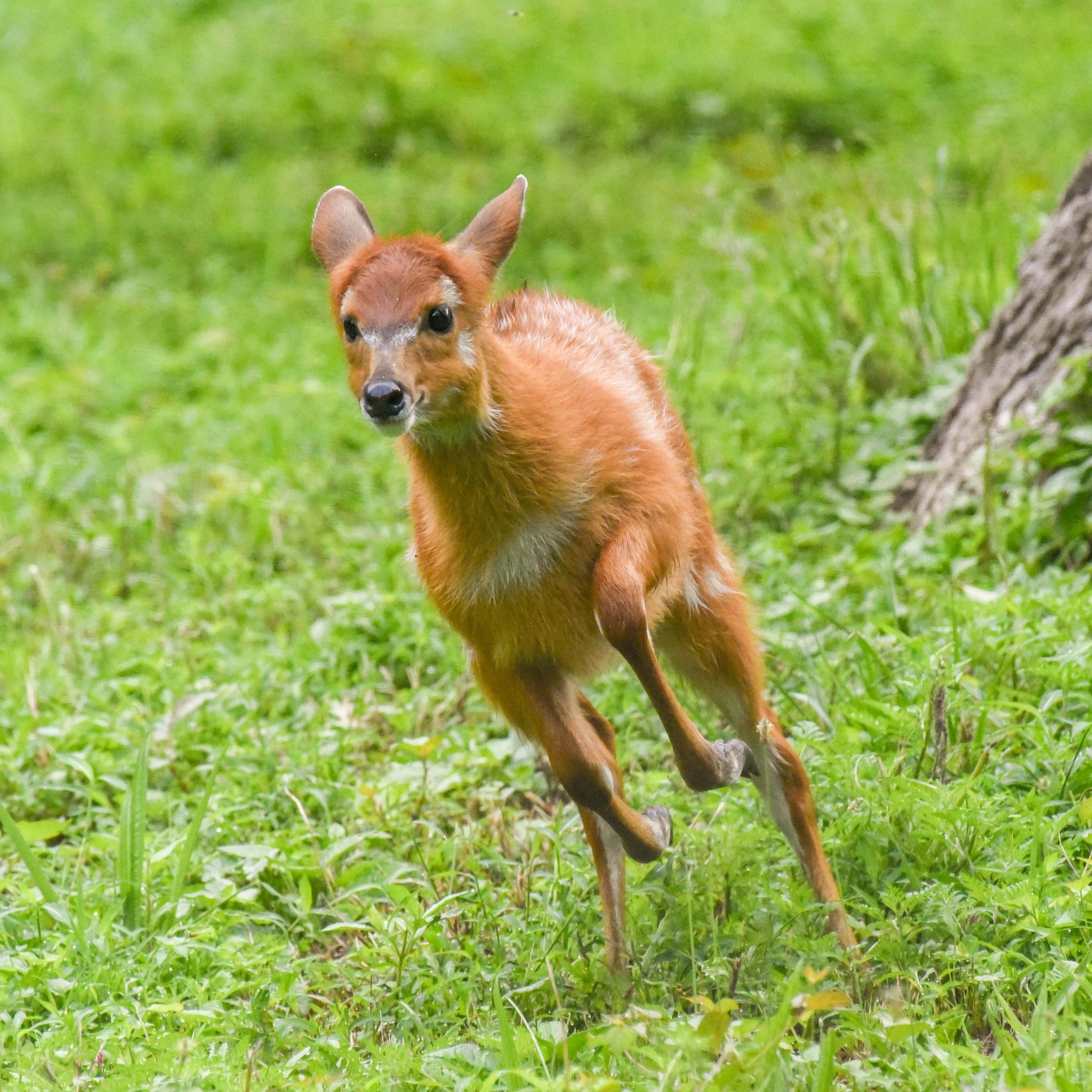Summary:
– Introduction to the Go Mae, go! Sitatunga Ally and her 2-month-old calf Mae
– Description of the viewable habitat and their first-time exploration
– Unique characteristics and adaptations of Sitatungas
– Importance of conservation efforts for Sitatungas
– Tips for observing Sitatungas in the wild
Have you ever heard of the Go Mae Go? Sitatunga Ally and her 2-month-old calf Mae? These amazing creatures recently explored their new viewable habitat for the first time, and their adventure has left us in awe of their unique characteristics. Join me as we dive into the fascinating world of Sitatungas, their adaptations, and the importance of conserving these incredible creatures.
Before we delve into the details, let’s take a moment to appreciate the beauty of Sitatungas. With their smooth reddish-brown coats, elongated hooves, and remarkable horns, they truly are a sight to behold. The Go Mae, go! Sitatunga Ally and her adorable calf Mae are shining examples of the wonders of nature.
Sitatungas tend to inhabit marshy and swampy areas, so their new viewable habitat has been thoughtfully designed to mimic their natural environment. Filled with water bodies, lush vegetation, and mud patches, this habitat provides the perfect landscape for these extraordinary creatures to thrive. It’s no wonder that Ally and Mae were overjoyed during their first exploration.
Now, let’s dive deeper into what makes Sitatungas so unique. One of their most fascinating adaptations is their ability to walk on marshy ground without sinking. They accomplish this amazing feat by having elongated hooves that act as natural flotation devices, distributing their weight and allowing them to easily move through the water. This adaptation enables them to access food sources that other antelopes would find inaccessible and provides an element of surprise and agility when evading predators.
Speaking of predators, Sitatungas have a remarkable strategy for staying safe. Instead of fleeing from danger, they prefer to hide in the water, submerging themselves with only their nostrils exposed. This behavior allows them to remain hidden and helps them avoid detection by their predators, such as leopards and crocodiles. We can all learn a thing or two from their clever tactics!
Conservation is vital in ensuring the survival of Sitatungas and other remarkable wildlife. These herbivores are essential for maintaining the ecological balance of their habitats, as they contribute to seed dispersal and control vegetation growth. Unfortunately, Sitatungas face numerous threats, including habitat loss due to human activities, hunting for their meat and hides, and the introduction of invasive species.
To help protect Sitatungas and support their conservation efforts, there are several steps we can take. Supporting wildlife reserves and national parks dedicated to their preservation is a great start. Additionally, promoting sustainable tourism and responsible wildlife observation can help raise awareness and generate funds for their protection. Remember, every little action counts!
If you’re fortunate enough to spot Sitatungas in the wild, there are a few tips to enhance your observation experience. First and foremost, be patient. These elusive creatures are known for their stealthy nature, and it may take some time before you glimpse them. Listen carefully for any rustling or splashing sounds that could indicate their presence. Keep your distance and use binoculars to observe them without causing any disturbance. And, of course, always respect their natural habitat and adhere to any guidelines set by wildlife authorities.
In conclusion, the Go Mae, go! Sitatunga Ally and her calf Mae have captivated us by exploring their viewable habitat. Sitatungas are truly remarkable creatures with fascinating adaptations that allow them to thrive in their unique environment. By supporting conservation efforts and practicing responsible wildlife observation, we can all contribute to protecting these beautiful antelopes. So, let’s spread the word and ensure a bright future for the Go Mae! Sitatunga Ally, Mae, and their majestic counterparts in the wild!
*****
Source Description
Go, Mae, go! Sitatunga Ally and her 2-month-old calf Mae explored the viewable habitat for the first time this week.


